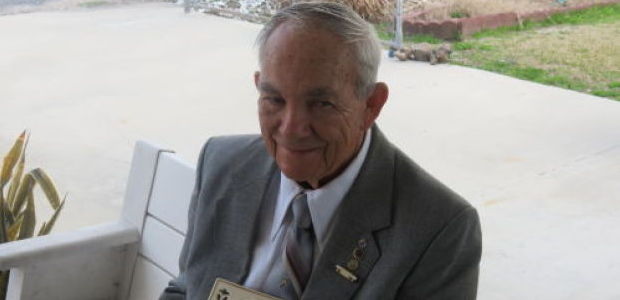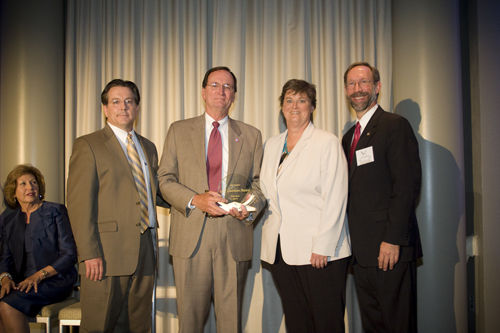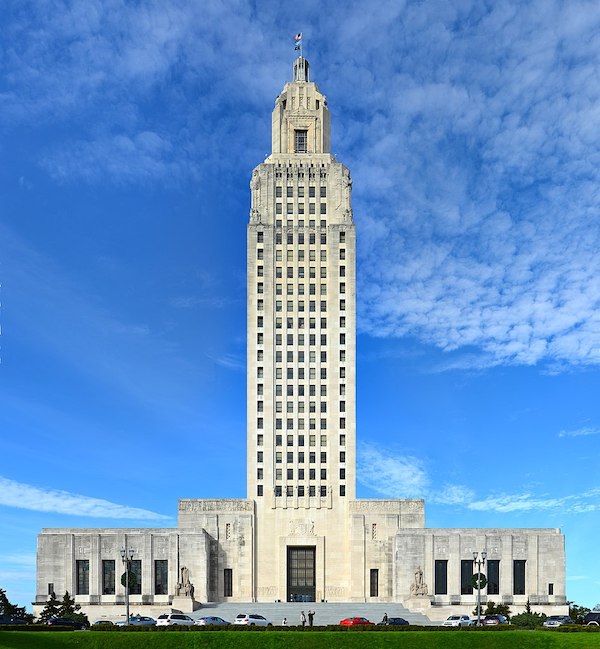
Endless love: Raceland couple shares vows 6 times
February 13, 2014
‘Zee’ named Graves’ successor
February 13, 2014The question of whether Terrebonne Parish’s method of choosing judges runs afoul of the federal Voting Rights Act is now – after years of debate – under the scrutiny of a federal judge, at a crucial and historic moment.
For the first time ever, a black candidate has a clear shot at being elected to the Terrebonne bench, and indeed may run unopposed. Ironically the lawsuit, if initially successful, could result in a halt to that election, scheduled for Nov. 4.
Members of the local bar say the unquestionable credentials and clear popularity of the candidate, Assistant District Attorney Juan Pickett, prove what they have said all along, that a black judge can be elected if the qualifications are there.
But attorneys who filed the suit and the plaintiffs they represent say the problem they seek to address is more than skin deep, and larger than the candidacy of any one person.
It is how the voice of people in the community registers at the polls, they maintain, that counts.
The current system of electing all five judges at large dilutes the vote of black residents, they allege, which is the problem that the Voting Rights Act is often used to cure.
“We need to have equal rights in choosing who would be on the bench, it is not all about it being a black judge,” said the Rev. Vincent Fuselier, pastor of St. Mathew Baptist Church in Houma. “It could be a woman, it could be a Native American. We just want to equalize the playing ground at the ballot box.”
The seating of an unchallenged black candidate, Fuselier said, is not an indication of what the choice of black people in Terrebonne Parish truly might be.
“I believe we have qualified attorneys here besides Juan Pickett. Nothing against Mr. Pickett. We helped build Terrebonne Parish, and if we were able to build it why can’t we select a judge in Terrebonne Parish?
We select candidates for the School Board, the Parish Council. So what is the difference with the judge?”
According to legal scholars versed in the application of Section 2 of the Voting Rights Act, under which the lawsuit is brought, there is not much difference at all.
The suit, brought by the Terrebonne Parish Branch of the NAACP, Fuselier, and three other black residents, names as defendants Piyush “Bobby” Jindal, as Louisiana’s governor, James D. “Buddy” Caldwell as Attorney General and Tom Schedler, as Secretary of State.
Neither the 32nd Judicial District, the Parish of Terrebonne nor any local official – including judges – are named in the suit.
Attorneys for the New York-based NAACP Legal Defense and Education Fund – a separate entity from the NAACP —filed the suit. They allege that the practice of electing five judges on parish-wide ballots cripples the ability of black voters to select a candidate of their choice, thus violating the Voting Rights Act.
NOTHING NEW
The game-plan attorneys are following is anything but new. Similar lawsuits nearly 30 years ago resulted in a new plan for judicial elections in Louisiana’s higher courts and in specified judicial districts, designed to cure the same issue alleged in the current litigation. The attorneys who filed the Terrebonne suit acknowledge that the prior cases, also brought in Baton Rouge, provided a blueprint of sorts.
Terrebonne Parish was not the subject of that litigation, because at the time its demographics did not match the criteria necessary for a change, said NAACP attorneys, who aver that the relevant data is now on their side.
The cure, as they see it, is creation of districts corresponding with divisions of court, with the lines of one encircling a large pocket of black voters, giving them a clear and unfettered voice in at least one judicial selection. It has popularly been called a “minority district.” The NAACP and the NAACP Legal Defense and Education attorneys call it an “opportunity district.”
Terrebonne NAACP President Jerome Boykin said his organization is not trying to reinvent the wheel, but rather to have Terrebonne conform to what has become a norm elsewhere in the Louisiana judiciary.
“If it is good enough for the State Supreme Court it is good enough for this district court,” Boykin said. “An opportunity district gives the voters of that district the opportunity to elect a candidate of their choice.”
Ryan Haygood, the Legal Defense Fund’s political participation director, said in a statement last week that at-large voting for judges in Terrebonne “has guaranteed that Black voters, in spite of having tried in election after election, cannot elect their judges of choice to this court. This lawsuit seeks to bring greater inclusion and democratic legitimacy to Terrebonne Parish’s political process through district-based voting.”
JUDGES NOT EXEMPT
The last time the Terrebonne judicial question became the subject of an official body’s action was in 2011. A bill co-authored by former State Rep. Damon Baldone, D-Houma, became the subject of rancorous debate. It would have created a minority sub-district for judicial elections.
All of Terrebonne’s sitting judges voiced opposition, as did Court of Appeals Judge James Gaidry,
Supporters of the current method of electing judges in Terrebonne – most notably Rep. Gordon Dove, voiced strong opposition. One of the arguments presented was the idea that judges are not representatives, like council members, and so the idea of a sub-district would not and should not apply.
Federal jurisprudence concerning the Voting Rights Act, however, has been clear on the subject.
A 1991 U.S. Supreme Court case, Houston Lawyers Association v. Attorney General of Texas, challenged the election of trial court judges in ten Texas counties. The scenario was similar to the Terrebonne’s; the suit was brought under Section 2 of the Voting Rights Act.
The high court ruled that elections for trial judges are indeed subject to Section 2, restating its previous position in a Louisiana case, Chisom v. Roemer.
“In reaching its conclusion, the Court put to rest the notion that certain offices were exempt from Section 2’s review,” wrote Pace University legal scholar Randolph M. McLaughlin in a law review article on the subject, who affirmed in an interview that there is no evidence that view has changed.
Baldone’s bill was defeated, prompting Terrebonne NAACP president Jerome Boykin, who had been pushing the concept of a minority sub-district for judicial elections, to vow redress in the courts. Distressed by Dove’s decision to oppose the bill, members of the local NAACP held protests at his home.
The NAACP Legal Defense and Education Fund lawyers had already begun to examine the Terrebonne Parish situation, and continued their research right through last week’s filing.
If there is a boilerplate of sorts for the suit, it could be found in a 1988 case, Clark v. Roemer.
TERREBONNE EXEMPTED
The plaintiffs in the Clark case argued that use of at-large multi-member districts to elect family court, certain district court and court of appeals judges diluted black voting strength, violating Section 2.
Such a violation, a federal district court judge ruled, could be found if “a politically cohesive minority group was sufficiently numerous to constitute a majority in a single-member district and white racial bloc voting prevented the election of minority-preferred candidates.”
Those standards were first voiced in a landmark 1986 U.S. Supreme Court decision on matters concerning Section 2, Thornburg v Gingles.
Acceptance of the arguments advanced in the Terrebonne Parish suit would require adhesion to that opinion, legal experts said in various interviews last week.
The Clark decision found that single-member majority black districts could be established in each of the existing court of appeals districts, that was also the case for some trial-level district courts. The demographics of Terrebonne Parish did not fit that scheme at the time; a cohesive enough minority voting presence, it was determined, could not be identified.
But the message that multi-member, at-large districts clashed with concepts of the Voting Rights Act was undeniable.
“In light of its findings, the court concluded that the use of multi-member election districts and circuit-wide election districts in judicial elections afforded African-Americans less opportunity to elect candidates of their choice,” McLaughlin wrote in his analysis.
The parties came to the table with their own solutions in the Clark case, resulting in minority sub-districts for the courts of appeal and certain judicial districts.
The Terrebonne case is based on the same logic and the same interpretations of Section 2. An important component is the statistical information the lawyers are providing so that the standards cited in the Clark case can be met.
“Terrebonne Parish’s black population is sufficiently numerous and geographically compact to provide for the creation of a single-member district,” the Terrebonne suit states.
“Black voters in one (sub-)district would constitute a majority of both the total population and the voting age population.”
MODERN HISTORY
Terrebonne elections as a rule, the suit alleges, are characterized by racial polarization “with bloc voting by non-Black/white members of the electorate consistently defeating black-preferred candidates, in election after election, when given a choice of black or non-black candidates.” The suit cites a 1994 judicial race in which Anthony Lewis, a black attorney who is now running for the bench in Lafourche Parish, ran against five non-black candidates, receiving 72 percent of the Black vote, but just 1 percent of the white vote. Lewis’ candidacy for the 1st Circuit Court of Appeal – noting that the 12-judge court has jurisdiction over 16 parishes – was also raised.
“Despite receiving more than 99 percent of the black vote from Terrebonne voters, Mr. Lewis only received 10 percent of the white vote from Terrebonne voters. Mr. Lewis ultimately lost the election to the white candidate,” the suit states.
A recent assessor’s election lost by black candidate Clarence Williams with similar polarized results was cited, as well as how the 2008 and 2012 presidential elections broke down along racial lines.
President Obama was favored by 98.9 percent of black voters in Terrebonne but only 13 percent of white voters in his re-election bid.
The racial divide was similar in 2008.
The lawsuit references the Clark cases, noting, “at-large methods of election, like Terrebonne Parish’s, have been struck by numerous Louisiana courts because of their discriminatory effect on voters of color.”
Altogether majority-minority sub-districts were imposed in nine judicial districts, the 1st, 4th, 9th, 14th, 15th, 18th, 19th, 24th, and 40th judicial districts, as well as the East Baton Rouge Family Court and the Court of Appeals 1st Circuit, 2nd District. The Legislature also created such sub-districts in the 23rd and 27th and in Court of Appeals 2nd Circuit.
A JUDGE’S SHAME RECALLED
The timing of the suit is auspicious in that a division of Terrebonne’s court is becoming vacant, meaning anyone who runs for that bench will not be challenging a sitting judge.
Lawyers are loathe to ruffle the feathers of judges who hold the fates and fortunes of their clients in their hands; For that reason an election to the Terrebonne bench is tantamount to an appointment for life – until the age of 70, when retirement for judges is mandatory.
District Judge Timothy Ellender, who sits in Division C, is set to retire due to the requirement so anyone who wishes to run may do so without risk.
Ironically, two low points in Ellender’s career are cited in the litigation as proof that blacks cannot muster or elect a candidate.
The suit notes that in 2004 Ellender was suspended after attending a Halloween party at the 1921 Seafood Company restaurant on Barrow Street wearing blackface, an Afro wig and a jail jumpsuit.
The judge’s wife was dressed as a police officer and, the litigation notes, his brother-in-law was dressed as the Our Gang comedies character Buckwheat.
Louisiana’s Judiciary Commission “ultimately determined that Judge Ellender’s portrayal of African-Americans in a racially stereotypical manner . . . perpetuated the notion of African-Americans as both inferior and as criminals,” and “called into question . . . his ability to be fair and impartial toward African-Americans who appear before his court as defendants in criminal proceedings.”
Also mentioned was a later suspension following allegations of judicial insensitivity by Ellender concerning a woman who was a victim of domestic abuse.
That Ellender was elected to another 6-year term in 2008 was further proof, the lawsuit, alleges, of the ineffectiveness of elections regarding black voters.
AN INJUNCTION IS SOUGHT
After noting several failed attempts over more than a decade to change Terrebonne’s judicial election scheme through legislation – while other judicial districts and appeals courts underwent change – the attorneys state that they seek to halt the pending election for Judge Ellender’s bench, until such time as a plan that will allow black voices to be heard can be crafted.
“Unless enjoined by order of this Court, Defendants will continue to act in violation of Section 2 of the Voting Rights Act and the constitutional guarantees of the Fourteenth and Fifteen Amendments by administering, implementing, and conducting future elections for the 32nd Judicial District using an at-large method of election,” the complaint states.
They seek a judicial declaration – despite statements to the contrary from local officials – that the at large method for electing judges in Terrebonne “was adopted and/or maintained with a discriminatory purpose in violation of Section 2 of the Voting Rights Act, and the Fourteenth and Fifteenth Amendments to the U.S. Constitution … (that it) has the result of denying or abridging the right to vote on account of race or color in violation.”
The suit also seeks to place Terrebonne Parish under supervision from the U.S. Department of Justice, requiring pre-clearance before any changes to voting districts can be made.
Terrebonne – and the rest of Louisiana – recently was relieved of pre-clearance requirements when Section 4 of the Voting Rights Act was struck down last year by the U.S. Supreme Court. Pre-clearance can be required, however, in individual cases where states or their subdivisions are found to have violated the law.
WALL OF SILENCE
Members of the local bar, which is overwhelmingly white, did not choose to comment on the suit, which many had not seen.
Terrebonne’s judges, who are not named in the suit, were offered the opportunity to comment but thus far have not.
What attorneys repeat is that they are puzzled by the suit, particularly since Terrebonne is likely well on its way to electing its first black judge.
Terrebonne’s NAACP President Jerome Boykin said he does not want to minimize or slight Juan Pickett’s potentially historic moment. Boykin’s critics – in the bar as well as in the political field – have suggested that he is not satisfied with Pickett’s candidacy because Pickett is not from his social or political circles, and not someone he can control, in their words.
Boykin says that even if Pickett is elected the history of exclusion can easily continue.
“Juan is a good guy and would make a good judge,” Boykin said. “But our fight is not about any individual. We are trying to create a seat, not create a candidate. It is not about Juan Pickett, it is about the system not being inclusive for all these years and it is time for the district to be inclusive. If Juan would win then once Juan retires we are back to the same thing we have been fighting for all these years.”
THE CANDIDATE SPEAKS
Pickett himself is focused on the election to come, not entirely convinced that – as his fellow attorneys suggest – he will run unopposed. But he has made clear that his candidacy has nothing to do with race, his or anyone else’s.
“My decision to run and seek this position is solely based on my qualifications and experience, if it is a parish-wide election or if it is not a parish-wide election,” Pickett said. “I have been practicing law 20 years and ever since I started practicing I had it in mind that I would run for judge once I had the experience. My experience inside the courtroom and outside the courtroom tell me I have what is needed to run … This is not something that just came up, I have given it a lot of thought and prayer and received overwhelming support to run for judge and it has been quite humbling.”
The attorneys who filed the suit are aware of Pickett’s pending candidacy but like Boykin, they say the issue is one of seeing to it that the law is followed, alleging that for many, many years it was not.
“The fact that Judge Ellender is no longer on the bench does not change our position. That a black candidate may be running does not change what we are trying to do, which is change the structure on the court. This is about black people being able to elect their candidate, not about individual people but about what is fair, an opportunity for voices to be heard. This is about creation of an opportunity district. It is wrong to say it is to seek a black seat, that is too simple of an explanation. What we seek is for the first time in history for black voters to have an opportunity to elect their preferred candidate.”














